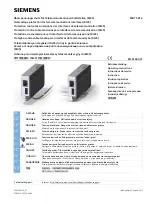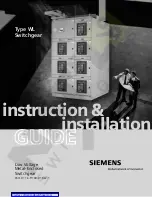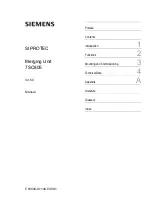
13
9. DC Input Terminals (All models):
The terminals’ lug screws secure the wires leading from
your external battery or battery system. Your battery or battery system must provide your
APS with proper DC voltage and your equipment with an adequate amp hour capacity. See
Battery Selection section, pg. 8 for more information.
10. AC Receptacles: NEMA 5-15R (Corded models only):
These receptacles allow you to
connect equipment that would normally be plugged into a utility outlet. They feature ground
fault indicator switches that trip when the receptacles are in danger of short circuiting. If the
switches trip, press to reset them when the short circuit situation is remedied.
11. AC Input Line Cord: NEMA 5-15P fixed (Corded models only):
This cord should be
plugged into a 120V, 60 Hz, dedicated 15 Amp AC utility outlet. DO NOT plug the cord into
the APS’s AC receptacles.
12. Hardwire AC Input/Output Terminal Strip (Hardwire models only):
Use the lug screws
on these terminals to secure hardwire connections for AC input and output. See pages 10 &
36 for wiring instructions.
13. Resettable Circuit Breakers (All models):
These circuit breakers protect your APS against
damage due to input or output overload. If a breaker trips, remove some of the load on the
APS to prevent overload, then wait 1 minute to allow components to cool before resetting
the circuit breaker.
14. Remote Module Connector (All models):
The front panel of all models has an RJ 45
receptacle for use with the optional remote module. (Module is included with all VR models.)
See the installation instructions packed with the remote module.
15. Load Sense Potentiometer (All models):
In order to save battery power, the APS’s inverter
automatically shuts off when no load is connected. When the unit detects a load, it
automatically turns the inverter on. Users may choose the minimum load the APS will detect
by adjusting the Load Sense Potentiometer. Using a small tool, turn the potentiometer clockwise
to lower the minimum load that will be detected, causing the inverter to turn on for smaller
loads. When the potentiometer is turned fully clockwise, the inverter will operate even when
there is no load. Turn the potentiometer counterclockwise to increase the minimum load that
will be detected, causing the inverter to stay off until the new minimum load is reached.
The factory setting for the potentiometer is fully clockwise, but in areas with frequent power
interruptions, the potentiometer should be adjusted counterclockwise until the inverter is
only in operation when the APS’s load is in use.
Switches, Indicator Lights & Other Features
continued
Other Features
200110086 120V APS MV-cabinetEn-Sp 93-2006.qxd 1/4/02 10:38 AM Page 13














































